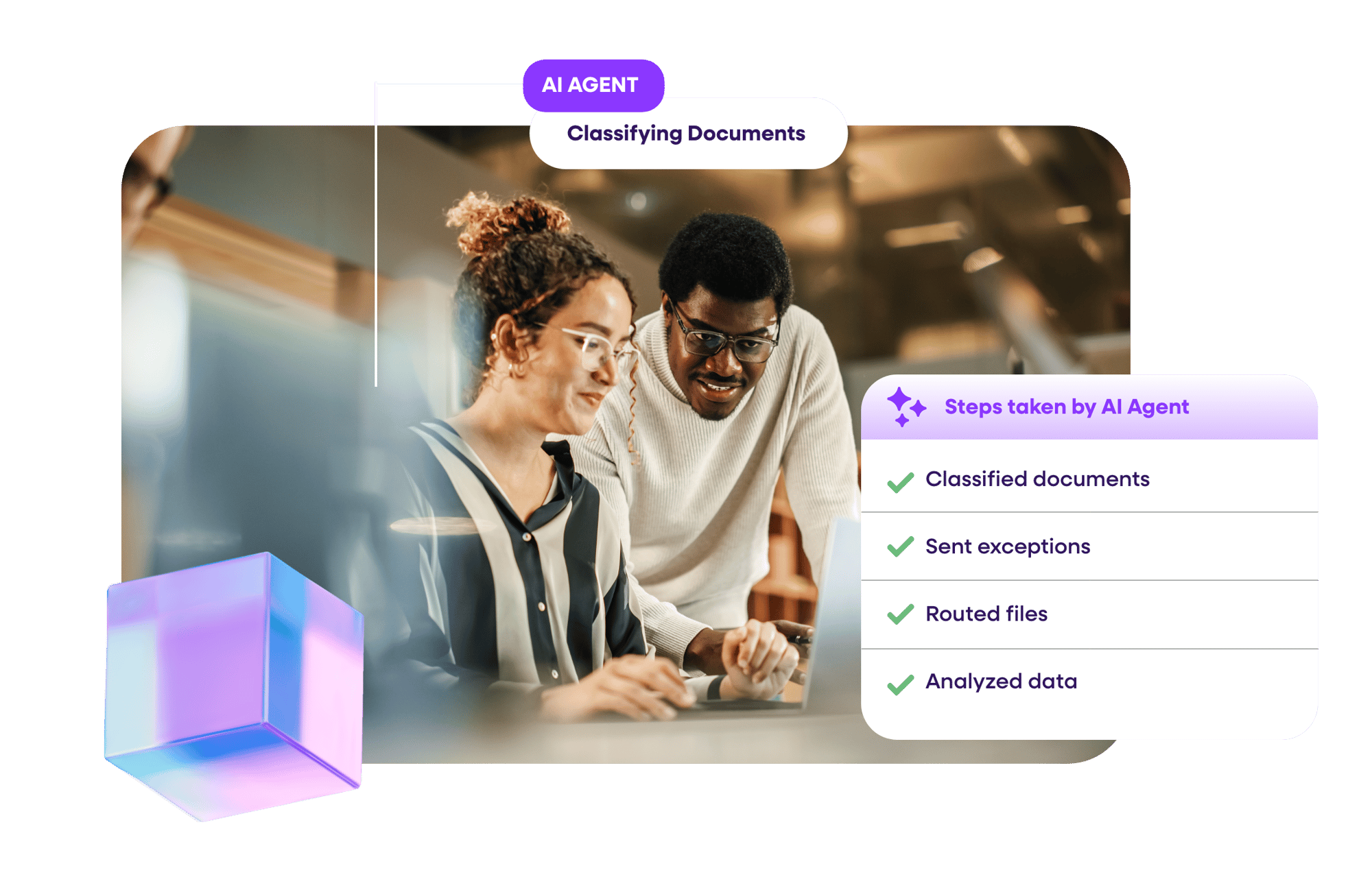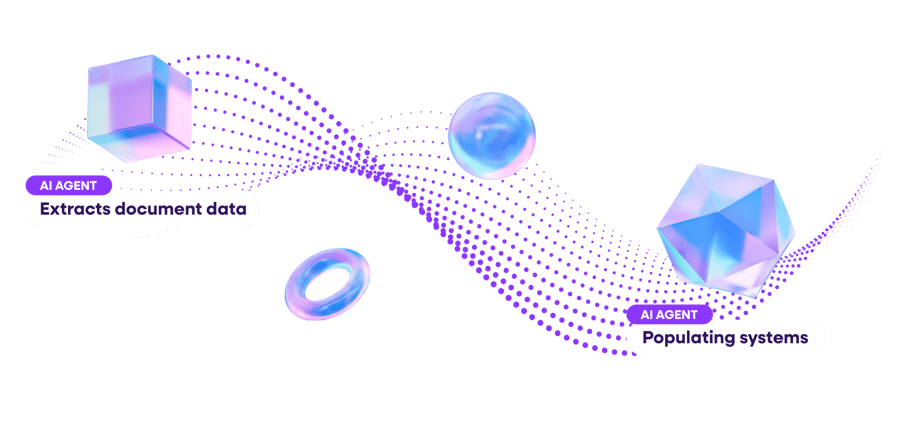Claims Indexing & Handling
Claims Document Classification, Indexing and Data Extraction
Use Roots AI Agents to empower your adjusters with seamless inbox management and efficient document processing

Top insurance companies trust Roots




























































Roots’ AI-powered automation helps insurance teams handle high document volumes, especially during peak periods like CAT season. With AI Agents working 24/7, document classification times are reduced by over 90%, allowing your team to process more claims without increasing headcount, all while meeting SLAs and improving overall efficiency.
Roots' InsurGPT AI model classifies documents with over 98% accuracy, eliminating the risk of human error in data extraction and classification. This ensures more consistent, accurate claims handling, reducing costly mistakes, and ensuring compliance with minimal manual intervention.
By automating document indexing and data extraction, Roots reduces the need for manual work, freeing up time for your team to focus on more valuable tasks. This cuts down on labor costs, reduces reliance on third-party services, and accelerates claims processing, resulting in a more cost-effective operation.
Challenge
Overwhelmed by the high volume of incoming documents with admins and adjusters spending their lunch breaks indexing and categorizing documents rather than working claims
The Challenges of High Document Volumes in Claims Processing
With diverse formats and human classification inconsistencies, managing document volumes can become a major hurdle. The constant pressure of maintaining accuracy, compliance, and managing legacy systems adds to the complexity of the claims process. If this sounds familiar, you're not alone.
AI-Powered Solutions to Transform Claims Indexing
Roots leverages cutting-edge AI and machine learning technologies to revolutionize claims document classification, data extraction, and routing. Our AI Agents work around the clock to handle incoming documents, increasing your team’s capacity and speeding up document processing. With InsurGPT, our insurance-specific AI model, we analyze both structured and unstructured documents to automatically classify over 50 document categories with 98%+ accuracy. This rapid processing ensures you meet SLAs and improve response times.
Free Up Time and Improve Accuracy
Say goodbye to backlog and slow processing times. Roots' AI Agents eliminate the manual work involved in document indexing, providing your team with the time and space they need to focus on more strategic tasks. With automated classification and data extraction, your team can significantly reduce errors, improve consistency, and cut costs, all while delivering faster, more accurate claims handling. Let Roots give your team the support they need to stay ahead.

Insurance AI Agents Support Across Business Lines

How It Works
How AI Agents Automate Claims Classification and Indexing Works
Monitor
Enable seamless communication and cooperation between your subject matter experts and AI Agents, enhancing overall productivity.
Document Splitting
Document packages are automatically pulled for analysis, classification, and split into individual document types
Classification
The InsurGPT AI model automatically indexes documents in to over 50 out of the box classification categories (see list below) and can be customized to meet business needs
Classification Exceptions
If a document does not meet the customizable classification accuracy thresholds the system notifies a team member for manual review and stores that classification for future reference
Routing to Team
Documents are routed to claims, subrogation, or servicing teams based on customizable rules
Routing to File Storage
Duplicate documents or ones that do not need to be reviewed can be automatically routed to the correct storage system
Routing to Extraction
Claims documents that need to have data extracted are automatically processed with the data output delivered to the correct system
Insurance Document Classification Categories
Our turn-key indexing model can be fine-tuned to include any document types to align with your categories. With the improved classification consistency available using AI, we often see a reduction in the number of classification categories.
The most common claims, servicing and underwriting document types and categories we work with are:
TABLE OF CONTENTS
Claims Correspondence
First Notice of Loss/ First Report of Injury, Claim Analysis, Claims Photos, Domestic Return Receipt, Affidavit, Acknowledgement Letter, etc.
ACORD Forms
Multiple versions including ACORD 80, ACORD 125, ACORD 126, ACORD 127, ACORD 130, ACORD 140 and more
Legal Correspondence
Demand Letters, Subpoena, Petition, Complaint, Notice of Lien, Notice of Hearing, Notice of Representation, Invoices, etc.
Medical Records, Bills and Invoices
Medical Records, Explanation of Benefits, CMS 1500, Medical Authorization, Medical Narrative Report, Medical Cards, Return to Work/Work Status, Patient Referral, UB04, etc.
Premium Audit Documents
Carrier premium audit questionnaires, Payroll reports / schedules, Federal & state tax payroll tax returns, 1099 information, COIs for 1099 contractors, etc.
Submission Documents
Loss Runs (multiple carrier versions), Agent Reports, census files, etc.
Various Reports
Police Reports, Expert Reports, ISO Reports, etc.

BENEFITS
Free your adjusters from tedious tasks.

- Reduce claims leakage by collecting more accurate, error-free claims data and applying claim procedures more consistently to reduce overpayments.
- Reduce costs by automating routine classification and data extraction tasks to reduce manual labor and reliance on third parties for document management.
- Enhance accuracy minimize human subjectivity and errors in the classification, data extraction and data entry process 98%+ accuracy.
- Improve straight-through-processing rates by minimizing manual document handling.
- Improve efficiency and capacity and reduce document classification times by 90%+ and expand team capacity to ensure documents are processed 24x7x365.
- Improve prioritization and instantly identify urgent documents or ones with specific types of demands for expedited processing and specialized assignment rules.
- Eliminate duplicate document reviews and find documents that have been previously captured and/or don’t need to be analyzed.
- Increase claimant satisfaction by delivering faster claims handling times and claims payments.



